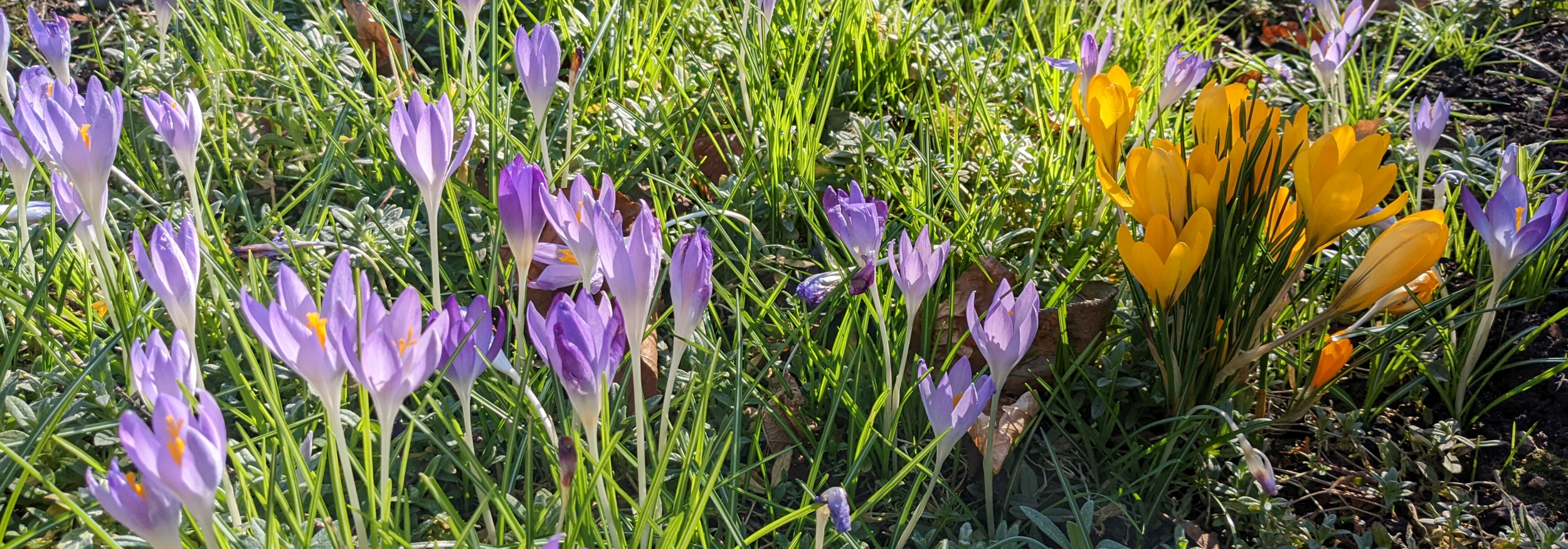Primula auriculas
/Like many gardeners I have a few favourite species of plant, including hostas which are placed around the north facing front door in summer and in the spring, auriculas on the patio; 38 pots at last count! These come in an amazing variety of colours and flower buds are appearing as I write in mid-March.
Auriculas are an exotic looking part of the primula family. The ancestors of our cultivated plants can be found growing wild in the European Alps. These are mostly yellow but a few red and purple sports caught the attention of plantsmen in the 1500’s. By breeding these with other primula species, plants of many colours and petal forms (striped, double, grey, green & frilled edged) and green and grey leaves were developed. Probably introduced here in the 1580’s by Flemish weavers, auriculas became a craze by the end of the 17th century, on a par with tulipomania, some plants exchanging hands for the equivalent of thousands of pounds. Today, fortunately, they are not quite so pricy, and you can buy them in most garden centres – though the rarer types are best purchased from specialist nurseries.
Auriculas are divided into 3 classifications, depending on cultivation requirements: Border (sturdy, hardy and rain tolerant), alpine (closest to the wild type and happy in well-drained soil) and show. The latter require cover in the winter and from the rain so are tricky to keep going, but border and alpine types will happily grow in our gardens or in pots. The traditional way to display auriculas is in an ‘auricula theatre’. There’s a fantastic one at Calke Abbey in Derbyshire, dating back to the 19th century which holds hundreds of show plants. Not owning anything like that, I use wooden wine boxes on their side which do the job really well. All auriculas benefit from being kept out of full summer sun – last year, I lost quite a few planted out in the garden, to the drought.
There are a few tips to keeping auriculas happy and the best guide I have found that keeps it simple, is on the Auricula and Primula Society website.
Why not try some this year? If you live close to Feering I have spares too and am always happy to give some away!


